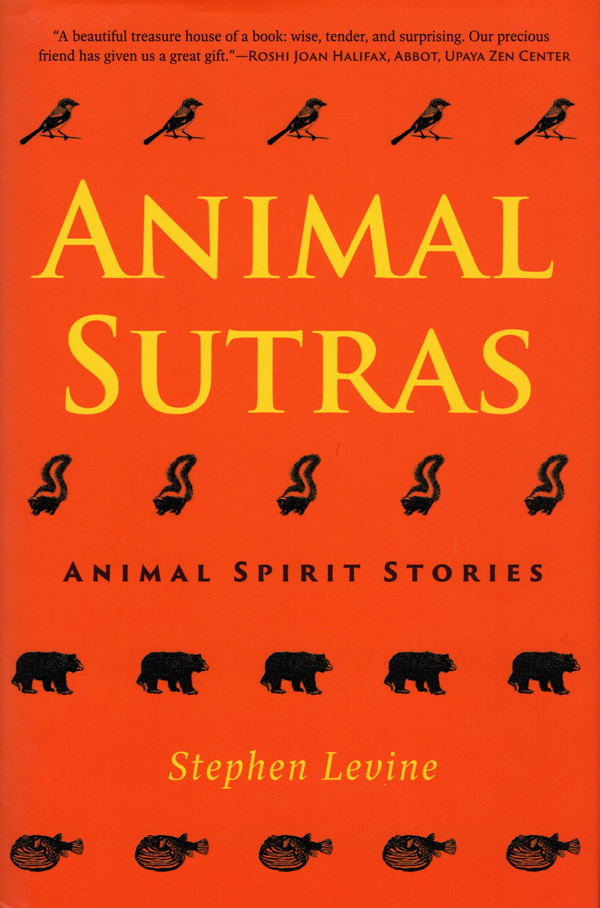Coming Home
The Experience of Enlightenment in Sacred Traditions By Lex Hixon
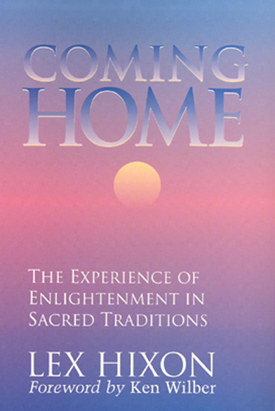
Retail/cover price: $14.00
Our price : $11.20
(You save $2.80!)
About this book:
Coming Home
The Experience of Enlightenment in Sacred Traditions
by Lex Hixon
"The single best introductory book ever written on the world’s great mystical traditions."
—Ken Wilber
Subjects: Spirituality, Religion
5.5 x 8.25, paperback
240 pages
ISBN 10: 0-943914-74-4
ISBN 13: 978-0-943914-74-9
Book Details
“Coming Home is a simple, brilliant book. It explains and epitomizes the best of the world’s great mystical traditions. By centering on the heart of enlightenment, it blazes the path of no-path. In the traditional Tibetan gesture of welcome, gratitude, and deep appreciation, I touch my forehead to that of my friend Lex Hixon—he who is “rooted in the Divine,” as this book so eloquently testifies.” —Ken Wilber, from the foreword
“Lex Hixon guides our spiritual journey with the deliciously subtle light of a honed intellect and an open heart.” —Ram Dass
What is Enlightenment, the ultimate goal of all sacred traditions? How does it affect the lives of those who experience it? Is there a common ground to how various traditions approach it? What does it mean for us today?
Coming Home is an unusually clear and readable exploration of these questions. Its experimental bent and spirit of universality have brought it wide recognition as a classic. Lex Hixon warmly guides the reader through an intriguing array of traditional teachings to the essential truth of all the world’s great religions, which is simply to come home. Invoking the essence and texture of different sacred paths, he presents Enlightenment as the full flowering of human nature, accessible to everyone.
“Outstanding as an introduction to the world’s great mystical traditions, I have used Coming Home in my philosophy of religion course for over fifteen years. The book’s purpose is to point to similar patterns of thought and experience across those traditions, but it never does so my abstracting them out. Instead it thoroughly embeds them in the lives and voices of individual mystics. It is this that makes it accessible as well as personally and intellectually inspiring to students.” —Nancy Baker, Professor of Philosophy, Sarah Lawrence College
Lex's Great Swan and Living Buddha Zen are also available from Larson Publications.
Foreword
Introduction
Note on Terminology
Chapter One
CONTEMPLATIVE THINKING
The European and Asian Approaches of Heidegger and Krishnamurti
Chapter Two
THE TANTRIC WAY OF THE GODDESS KALI
Ramakrishna of Bengal
Chapter Three
THE WAY OF NATURAL ENLIGHTENMENT
Ramana Maharshi
Chapter Four
TEN SEASONS OF ENLIGHTENMENT
Zen Ox-herding
Chapter Five
THERE IS ONLY THE ONE
Plotinus and the Metaphysics of Spiritual Quest
Chapter Six
THE LANDSCAPE THAT LAUGHS
Jewish Soul Masters of the Hasidic Way
Chapter Seven
THE NEW AEON HAS DAWNED
Letters of Saint Paul
Chapter Eight
ALLAH ALONE CAN KNOW ALLAH
Teachings of the Contemporary Sufi Bawa Muhaiyadeen
Chapter Nine
CONVERSATION WITH AN ANCIENT CHINESE SAGE
The Oracle Text of the I Ching
Chapter Ten
DESIGNING AN EXPERIMENT IN CONTEMPLATION
Toward the Turiya of Advaita Vedanta
Bibliographical Notes
“Well crafted, thoughtful. Inspired.” —Library Journal
“Lex Hixon guides our spiritual journey with the deliciously subtle light of a honed intellect and an open heart.” —Ram Dass
“. . . While it is necessary to be aware of both the cultural and historical context from which spiritual teachings come, it is wise to take teachings in the spirit in which they have been intended. This is perhaps the finest aspect of Coming Home. Lex Hixon has caught the essence of the teachings that transcend human tendencies towards over-simplification, false judgment, exclusivity and rejection. Lifted above the separations of belief systems and their manifestations, we can glimpse the harmony and universal love that exists in the heart of all sacred traditions. However it may be expressed, is not there really only one ‘Teaching,’ leading us towards the one ‘Truth’?
“As Paul perceived in the radiance of Spirit no more distinctions between Jew and Greek, slave and free, male and female, neither can we perceive any fundamental distinction between Jew and Christian, Buddhist and Hindu, theist and nontheist, believer and nonbeliever. There is only one inclusive spiritual family, the Mystical Body, the secret of Divine Life lived fully through the planetary life of conscious beings. Awakening to this secret, instantly we enter the New Aeon.
“Any book that can foster such an understanding in a world torn by hatred and violence and in which religious wars are still being fought, is a welcome addition to the legacy of human literature. Coming Home is such a book.” —Danita Halldorson in Ascent, Journal of Yasodhara Ashram Society
“Lex Hixon has written this concise tour de force of comparative religion in a lively yet erudite manner. Instead of detailing accounts of the creeds, cults, and codes of the major world religions, the author focuses his literary attention on the mystical element within each tradition (e.g., Tantra within Hinduism, Zen within Buddhism, Kabbalah and Hasidism within Judaism, and Suflsm within Islam). Moreover, he recognizes religion as the mystical experience of enlightenment in lieu of doctrine or dogma. . . .
“Coming Home is filled with the illuminating stories of various sages, and includes Hixon’s own revelation of a peak experience of the ‘golden light’ of the One which he had while meditating with the Rosicrucian master, Mother Serena. He went into what the Indian sages call ‘nirvikalpa samadhi’ or objectless awareness, He reports, ‘All was clear. This brightness was so total that there was no room for an I; yet even in the absence of a particular I, awareness was fully present.’
“One of the highlights of this spiritual guidebook is the series of drawings by Eugene Gregan of Zen Ox-herding’s ‘Ten Seasons of Enlightenment.’ His brush strokes are crisp, simple, and reflective of the contemplative captions. The final phase, ‘Entering the Marketplace with Helping Hands,’ represents a kind of modern Bodhisattva vow. Hixon says, ‘The cheerful one who fully manifests Enlightenment follows no path. He carries a wine gourd, symbol of the Tantric ecstasy which transforms the wine of the delusive human world from poison into nectar.’ . . .” —Mukunda Makowsky in Yoga Journal
“In a word, superb. A book to live with.” —New Age Journal
“Enlightenment is the awakening to our primal harmony or, in another mystical language, to our rootedness in the Divine.”
Thus begins what is, in my opinion, the single best introductory book ever written on the world’s great mystical traditions. As Lex Hixon himself makes quite clear, Coming Home is not an attempt at an academic survey or a textbook of the historical and doctrinal details of each of the great wisdom traditions. There are many excellent books that already serve this function (Huston Smith’s The Religions of Man, for example). Nor is this book an attempt at a philosophical justification of the mystical or enlightened state (W.T. Stace’s Mysticism and Philosophy accomplishes this brilliantly). Nor is it even a general anthology culled from the various traditions. Such anthologies—Aldous Huxley’s The Perennial Philosophy is still the best—are important because they demonstrate that however different the various wisdom traditions might outwardly appear, they nevertheless inwardly share certain profound and cross-cultural insights into the nature of absolute Spirit or Godhead. And the supreme insight shared by all of the great traditions is simply this: absolute Spirit or Godhead is the ultimate source, essence, and identity of each and every individual being. Absolute Spirit is one’s own True Nature or Original Face, which is the face of the cosmos as well. There is only God; and so these anthologies eloquently proclaim.
Important and extremely valuable as these approaches are, Lex Hixon’s approach cuts at right angles to all of them, not replacing or displacing, but complementing them. He simply assumes the truth of Divine Spirit as manifested in and through the various wisdom traditions, and then, instead of telling you all the historical details and doctrines of the various traditions, he invites you to release yourself into Spirit as it manifests itself through each of these traditions. Each chapter is thus devoted to a particular path, from Taoism to Krishnamurti, from Zen to Plotinus, from Vedanta to Sufism. While each essay gives enough historical background to orient the reader, the real purpose is to talk you into the contemplative awareness that is the mystical heart of each tradition but that is itself beyond all talk. The intent is to use thinking to tease us out of thinking, to dive to the very heart of the particular path, and to allow us to release ourselves into the openness and illumined nature of the very Divine itself. Lex Hixon is not primarily interested in doctrine, dogma, or ideas about Spirit, however relevant they all might be, but rather in the vulnerable, open, empty, illumined, and direct experience or realization of Spirit itself, standing free at the Heart, outshining the world, radiant to infinity. It is this timeless awareness that he wants us to glimpse.
Because Spirit manifests itself only in and as the world of form—of apparently separate things and apparently different events, of seeming separation and isolation and alienation—it is in this diverse world that we must begin our search for the One beyond the Many, our Primordial Ground. Therefore, we need a vehicle, a yana, to take us to the formless shore beyond, even if the final realization is only that no vehicle was necessary or even possible. It is for this purpose that the world’s great mystical paths have come into existence. They are not beliefs, not theories, not ideas, not theologies, and not doctrines. Rather, they are vehicles; they are experiential practices. They are experiments to perform (and thus see “through form”). They are something to do and then be, not something to merely think and then believe. Ultimately, there are no mystical doctrines or beliefs whatsoever; there are only mystical experiences and insights, all springing directly and immediately from the flow of one’s own primordial experiencing in this very moment, illuminating all that is, like sunlight on the clearest of crystal autumn days.
This is the genius of Lex Hixon’s book. He does not dwell on the forms, doctrines, and details of the various traditions, essential as they most definitely are. Rather, he takes us gently but almost immediately to the unending conclusion of each and every path—the mood and experience of enlightenment itself. Using the terms and sometimes the actual practices of each of the particular vehicles that he is discussing, he invites us, in each chapter, to release all forms concepts, names, and thoughts, and to tacitly acknowledge and actually feel that which is always prior to thought and sensation—namely, our own primordial experiencing or basic awareness, the presence and flow of Spirit itself.
This fundamental and universal consciousness you and all beings possess fully at every moment. It is your simple and bare awareness in this moment before you manipulate it, name it, judge it, or in any way fiddle with it. It is always the case prior to your attempts to grasp it. And therefore, ultimately, there is no path to this primary, basic, and ultimate consciousness. There is no way to walk to your own feet. Rather, the various traditions provide ways to exhaust the seeking mind, and the effort to grasp in time that which is eternal, to exhaust the attempts to grasp in space that which is infinite, and to exhaust the “great search” for Spirit so that Spirit itself may shine forth of its own accord. As Eckhart said, “God is closer to me than I am to myself.” God or Spirit is simply your ultimate Self or Consciousness now lighting the words on this page—a Self (or no-self) that is one and undivided in all sentient beings.
This enlightened understanding and realization is what each of the world’s great wisdom traditions attempts to transmit to those who would consent to perform the great experiment in their own souls. And it is the timeless conclusion of this mystical experiment that Lex Hixon presents throughout this book. In each chapter he takes us from surface thinking and the world of will and seeking and forms to a deeper or contemplative understanding, itself devoid of form, seeking, restriction, or knowing. In that openness, flashes of enlightened mind can shine forth, taking you so radically beyond yourself that you actually discover your True Self or Original Nature, which is as close as your present experiencing and your own basic awareness in this very moment. To abide as that Awareness in the simplicity and luminosity of the present, without will or effort, is to be ushered into a magical world you never left and, thus, to understand what it means to be “coming home,” a homecoming that is said to lead from time to eternity and from death to immortality.
Coming Home is a simple, brilliant book. It explains and epitomizes the best of the world’s great mystical traditions. By centering on the heart of enlightenment, it blazes the path of no-path. In the traditional Tibetan gesture of welcome, gratitude, and deep appreciation, I touch my forehead to that of my friend Lex Hixon—he who is “rooted in the Divine,” as this book so eloquently testifies.
—Ken WilberINTRODUCTION
by Lex Hixon
Enlightenment is the awakening to our primal harmony or, in another mystical language, to our rootedness in the Divine. From Enlightenment radiate the insight, compassion, and power needed to resolve individual and collective human problems as they continue to arise endlessly. Enlightenment is not a magical transcendence of the human condition but the full flowering of humanity, disclosing unity and equilibrium at the heart of the love and suffering we call life. All existence is revealed to the Enlightened human being as a seamless whole, as Divine Life. Some taste of this Enlightenment which consciously touches the Ultimate is possible for each of us. It need not be deferred to any future existence in heaven or on earth. Enlightenment is the secret essence of our consciousness, and the gradual revelation of this essence is the process of spiritual growth in which everyone is involved.
These essays present several universes or languages of Spirit whose central theme is Enlightenment. Each is unique, yet all are rich with mutual correspondences because they reflect one primal awareness. The spiritual dimension of culture is not an array of dogmatic world views bristling with contradictions but a spectrum of contemplative practices, equivalent in essence, which lead toward experience rather than toward doctrinal assertion. Coming Home attempts to open various doors into this spiritual dimension.
Coming Home is not a systematic study of sacred traditions but evokes the actual texture of Enlightenment as a process that occurs mysteriously in all cultures. The approach is impressionistic, even lyrical. As a film is meant to be viewed without interruption, each essay is designed to be read at one sitting, drawing the reader into a complete world of experience as film does. The quality of theater is enhanced by reading the essays aloud among friends. This book is an attempt to embody what Hermann Hesse pictures in his novel The Bead Game: a contemplative game of multicultural chess, noncompetitive and symphonic, through which healing and revealing harmonies are created, not just intellectually but as tangible, communally shared experience, similar to music.
The language and thought of these essays are not simplified for some hypothetical general reader but will engage any reader interested in the spiritual dimension of culture. There are no scholarly technicalities. The writing will make demands on your attention but does not presuppose advanced study of religion or philosophy. Being primarily an attempt to kindle intellectual and spiritual vision rather than to explain, these essays could be characterized as meditations. They require sympathetic participation rather than detached reading.
Perhaps it will be helpful to review the cultural moments woven together here. Heidegger invokes the Western philosophical and Christian mystical traditions. He is one of the deepest contemporary Western contemplative thinkers who has no traditional religious commitment. Krishnamurti, who also remains unassociated with religious tradition, translates into modern language the spirit of ancient Asian contemplative practice. By contrast, Ramakrishna, who lived from 1836 to 1886, was fully immersed in Indian cultural and religious forms. Yet he possessed a rare universal vision which could take these forms beyond their own limits while safeguarding their original integrity. Ramakrishna’s ecstatic participation in the Hindu, Christian, and Muslim spirituality to which he was exposed expresses the all-embracing Tantric Way. By further contrast, the Indian sage Ramana Maharshi, who died in 1951, had a meeting with Somerset Maugham, which inspired The Razor’s Edge, a work which essentially bypasses all religious and cultural forms, Eastern and Western. Ramana may be the Einstein of planetary spirituality, transcending previous approaches to religion as the General Theory of Relativity transcended earlier, more parochial systems of physics.
Moving now from the contemporary to the ancient, we contemplate the Zen Ox-herding pictures, representations of ten phases in the process of Enlightenment which have enhanced the deeper understanding of Buddhist practitioners since the twelfth century. The essay is illustrated with a contemporary version of the Ox-herding pictures by the American artist Eugene Gregan. The essay on Plotinus attempts to show that this mystical Platonic philosopher from the early centuries of the Christian Era is perhaps the most profound metaphysician of the spiritual quest who has appeared at any time in any culture. The essay closes with an account of my own experience, through spiritual imagination, of the ascent to the One about which Plotinus eloquently speaks.
The following three essays are intimately connected, exploring sister universes of Spirit: Judaism, Christianity, and Islam. The essay on Jewish Hasidic soul masters enters directly into the sphere of holy ecstasy, which is impenetrable by any rational approach. The essay on the letters of Saint Paul stresses the kinship between Paul as a mystical rabbi and the Hasidic teachings explored earlier. Paul’s ecstatic experience on the road to Damascus is the seed for the mystical approach to the Messiah developed by Christian tradition. We next turn to a personal letter written to me from Sri Lanka by a contemporary Islamic sage, Bawa Muhaiyaddeen, who embodies the Sufi Way. Then, from the perspective of the Confucian and Taoist traditions of ancient China, we examine the themes encountered thus far, seeking guidance in the traditional ritual manner from the oracle text of the I Ching. This revelatory interlude resembles conversation with an ancient Chinese sage. Finally, the tenth essay attempts to gather and fuse all these languages and images into a contemplative experiment to be carried out by each reader. The Absolute of Advaita Vedanta, termed Turiya in Sanskrit, is related in this essay to contemplative practice in terms of a vivid experience which occurred to me during meditation. Thus Coming Home culminates not on the level of intellectual inquiry but in the sphere of spiritual practice and experience.
The story of my own path to the Spirit centers around an elderly Sioux spiritual leader, holy shaman in the role of Episcopal priest, who introduced me to prayer and meditation when I was nineteen. Father Deloria awakened in me a thirst for contemplative practice and mystical experience with stories of his grandfather, Tipisapa or Black Tipi, a traditional Lakota holy man. Through the medium of Christian spirituality, Vine Deloria practiced the long waiting in silence and experienced the sacred visions characteristic of Native American spirituality. He actually perceived a globe of intensely beautiful Divine Radiance, the presence of Wakantanka, the Great Spirit, floating at the foot of the Cross as he celebrated Communion. Thus my own spiritual life sprang up through the interplay of sacred traditions.
When I was twenty-four, I made acquaintance in New York City with Swami Nikhilananda, a senior monk of the Ramakrishna Order, urbane, scholarly, and far advanced in contemplative life. My wife and I were blessed to study and meditate with Nikhilananda in close relationship for the last eight years of his life. He was a direct disciple of Sarada Devi, wife of Ramakrishna, who is among the most radiant woman saints of modern times. In her immediate lineage I received initiation and spiritual training. Since then I have been further blessed by initiation and instruction from spiritual guides representing various traditions, deepening my appreciation for the all-embracing attitude expressed by Ramakrishna and others who share the universal vision.
Exploring this universal way while completing my doctorate in religion at Columbia University, I have produced weekly radio documentaries over the Pacifica station in New York City, interviewing well-known spiritual teachers from around the world and their close disciples. This experience has been rich but difficult to assimilate. The crosscurrents of spiritual practices and commitments immigrating to America and emerging from contemporary American culture are complex and confusing. Coming Home represents my own affirmation of the spiritual harmony that resolves this confusion. The resolution is not facile but has been long sought and pondered. Nor is it a position of naive acceptance of various religious claims. Spiritual longing should be accompanied by sympathetic yet critical intelligence that continually reorients us to the most compassionate ethical values and the most comprehensive practice of contemplation.
Writing this book has involved an intense process of sharing with you, the reader, as the original talks on which the essays are based involved an intimate sharing with some twenty people of various ages and persuasions who attended my evening lectures at the New School for Social Research, in New York City, during the spring of 1975. Shared understanding moves deeper than private understanding, creating through words a kinship beyond words.
To the ancient saints and contemporary men and women of the Spirit too numerous to name who are my teachers, and to family, friends, and now readers, with whom I share the spiritual adventure, I offer gratitude. Perhaps human relationship is the most holy sacrament.
Lex Hixon
New York City
May 1978
CONTEMPLATIVE THINKING
The European and Asian Approaches of Heidegger and Krishnamurti
(excerpt)
Imagine you are wandering through a vast cathedral. Countless stained-glass windows, radiant in the darkness, represent the modes of worship and ways of understanding that humanity has evolved throughout its history. Some windows picture Divine Presence through personal forms or attributes, and seekers worship before these windows with devotion. Other seekers, preferring the way of wisdom, contemplate stained-glass windows that present nothing personal, simply esoteric patterns evoking primal harmony and unity. Devotion and wisdom are alternate ways to Enlightenment. Some sacred traditions interweave both ways.
What occurs as we contemplate these cathedral windows? We are really experiencing Light, diffused through complicated contexts that have been created, individually and communally, by visionary artisans. And we cannot step outside this cathedral, which is human thinking, because we must depend on some personal and cultural medium. We cannot articulate any experience, even to ourselves, without some process of thinking. This is not imprisonment but simply the nature of the Light or Reality, which expresses itself as experience only through some particular medium.
We may feel disappointed. Can we never encounter directly whatever is out there, beyond the opaque windows of personal and cultural interpretation? Can we experience Reality only indirectly? What and where is the Source of this Light? Such inquiry leads us deeper into contemplative thinking, and as our contemplation intensifies, a surprising reversal of perspective occurs. This is the experience of Enlightenment, through which we cease to imagine ourselves simply within this cathedral of the human mind. We become aware that the essence of our consciousness is the essence of the Light that illuminates the countless windows. We realize Consciousness to be the Light which constitutes all phenomena. We are always shining outside the cathedral, but there is nothing out there to see, only to be. Our True Nature alone is there: Divine Radiance, or Ultimate Consciousness. Particular experiences can occur only through particular windows, but we are the Clear Light that the human mind, which has created this vast cathedral and refracts through all its languages and images.
Each window of devotion or wisdom translates the same radiance of Ultimate Consciousness by means of personal figures or symbolic patterns unique to itself. Through dedicated contemplation of even a single window, we can attune to Light, or Reality, and eventually realize that our intrinsic nature is this Light. Once realizing the universal cathedral to be flooded with the conscious Light of our True Nature, once Enlightenment has dawned, we are at home everywhere. We have been freed from the competition between worldviews, by understanding the essential equality of all windows of contemplation and the harmony between the ways of wisdom and of devotion. Everywhere in this vast cathedral, through all possible languages and images, we now recognize the Light, or Consciousness, which we are, which all beings are, which Being is.
This image of the cathedral illustrates the nature of contemplative thinking, a process natural to the mind by which thinking is led to its own core, or ground. Because contemplative thinking is not external to the ordinary functioning of the mind, it can be experienced without entering any special state of trance or ecstasy. Nor does such deep thinking depend on formal training. Even during ordinary thinking, the harmonizing and unifying flow of contemplation is always present. Each of us has immediate access to the contemplative mood the moment we explore the ground of our own awareness. Yet our access to deep thinking can be obscured by unfamiliarity. The natural contemplative mood often remains dormant until kindled by the touch of an awakened person.
Contemplative thinking is not confined to certain fields such as religion, art, or philosophy but flourishes subtly throughout every culture, often obscurely among small circles or secretly within the inner life of individuals who may not be aware of any mystical tradition. This ever-deepening way of contemplation, which follows devotion and wisdom to their Source, is perhaps the most precious human possibility. The holy person, or shaman, in every culture—poet musician, saint, warrior—is revered for the powerful touch that awakens and sustains deep thinking and its sense of discovery, freedom, and harmony. The figure of the shaman is a sacrament through which all members of the culture without exception can enter the mood of contemplation.
We present here two such individuals from the contemporary world. Heidegger, the German philosopher, emerges from Greek philosophical and Christian mystical traditions. Krishnamurti, the Indian sage, expresses an incisive Asian approach. Although from contrasting cultural environments, the contemplative thinking of both have a similar resonance. Both thinkers create stained-glass windows of wisdom rather than devotion. Their refusal to identify with any conventional religious context helps us to begin this study of contemplative life relatively free from our presuppositions about religious imagery. Yet Heidegger’s experience of Being and Krishnamurti’s experience of Truth constitute the fulfillment of the sacred quest in whatever cultural forms this quest is clothed. . . .
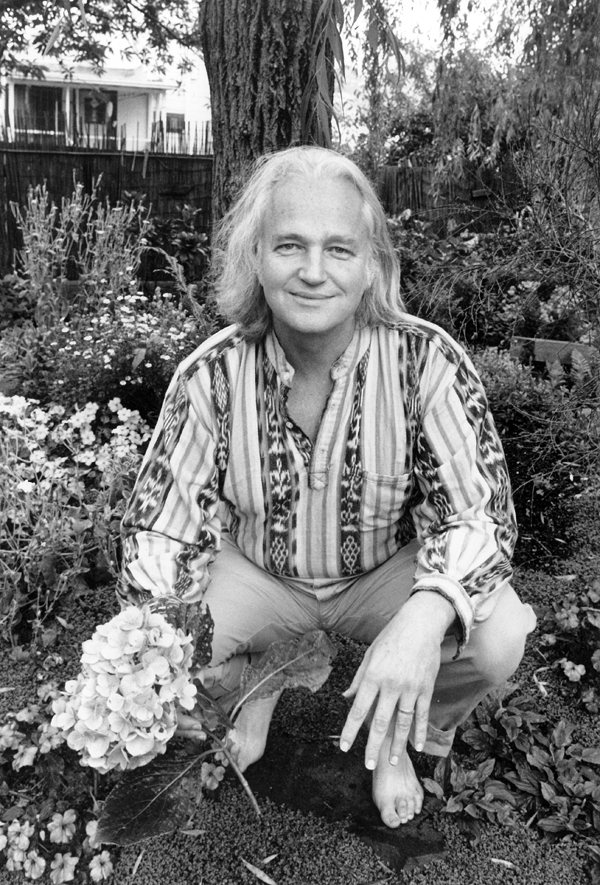
“Lex Hixon was a pioneer in the spiritual renaissance in America over the last four decades.” —Allen Ginsberg, poet
Lex Hixon (1941–1995) was truly an ambassador for the brighter possibilities of humanity’s future. An author of seven books, a practitioner/leader of five different religions, an accredited scholar (Ph.D. Columbia), and a contagiously passionate mystic, he left a priceless legacy for all who aspire to global community.
Originally a disciple of Swami Nikhilananda of the Ramakrishna Order, Lex came to life in five “parallel sacred worlds.” He was a member of the Eastern Orthodox church, became a teacher in a traditional Sufi lineage, and co-founded the Nur Ashki Jerrahi Sufi Order in the United States. For many years he hosted the radio program “In the Spirit” WBAI, on which he interviewed many religious teachers (including Mother Teresa of Calcutta and the Dalai Lama of Tibet) and was responsible for introducing their practices to many Americans. He was the founder of Free Spirit magazine. Shortly before his death, he was in the process of being ordained as a successor in the initiatory lineage of Dogen’s Soto Zen.
After Lex received his Ph.D. in World Religions from Columbia University in 1976 at age thirty-five, his first book was published by Doubleday in 1978, Coming Home: The Experience of Enlightenment in Sacred Traditions. This book, with its experiential bent and spirit of universality, has been widely recognized as a classic and is used regularly in college courses.
For more than thirty years, Lex traveled the globe making first-hand explorations of various initiatory lineages, always maintaining the clear and balanced overview he expressed in Coming Home. He began his traveling early, at age nineteen, when he lived and studied in South Dakota with Vine Deloria, Senior, a Lakota Sioux elder and Episcopal priest.
Beginning in 1980, Lex made a profound fifteen-year study of Islam and Sufism, which he reported in two of his books, Heart of the Koran and Atom from the Sun of Knowledge. His first-hand experience of Buddhism appears in Mother of the Buddhas: Meditation on the Prajnaparamita Sutra and Living Buddha Zen. His thirty-year involvement with the Divine Mother tradition of Bengal is documented in Great Swan: Meetings with Ramakrishna and Mother of the Universe: Visions of the Goddess and Tantric Hymns of Enlightenment. His final book was Living Buddha Zen, which he happily lived in good health long enough to hone to his full satisfaction.
Lex’s experience of being “orthodox in five different spiritual traditions” produced a unique philosophy, a “theory of relativity for religions.” His warm, joyful manner of teaching, celebrating, and encouraging spiritual seekers of all kinds touched thousands of lives.
Book Details
“Coming Home is a simple, brilliant book. It explains and epitomizes the best of the world’s great mystical traditions. By centering on the heart of enlightenment, it blazes the path of no-path. In the traditional Tibetan gesture of welcome, gratitude, and deep appreciation, I touch my forehead to that of my friend Lex Hixon—he who is “rooted in the Divine,” as this book so eloquently testifies.” —Ken Wilber, from the foreword
“Lex Hixon guides our spiritual journey with the deliciously subtle light of a honed intellect and an open heart.” —Ram Dass
What is Enlightenment, the ultimate goal of all sacred traditions? How does it affect the lives of those who experience it? Is there a common ground to how various traditions approach it? What does it mean for us today?
Coming Home is an unusually clear and readable exploration of these questions. Its experimental bent and spirit of universality have brought it wide recognition as a classic. Lex Hixon warmly guides the reader through an intriguing array of traditional teachings to the essential truth of all the world’s great religions, which is simply to come home. Invoking the essence and texture of different sacred paths, he presents Enlightenment as the full flowering of human nature, accessible to everyone.
“Outstanding as an introduction to the world’s great mystical traditions, I have used Coming Home in my philosophy of religion course for over fifteen years. The book’s purpose is to point to similar patterns of thought and experience across those traditions, but it never does so my abstracting them out. Instead it thoroughly embeds them in the lives and voices of individual mystics. It is this that makes it accessible as well as personally and intellectually inspiring to students.” —Nancy Baker, Professor of Philosophy, Sarah Lawrence College
Lex's Great Swan and Living Buddha Zen are also available from Larson Publications.
Foreword
Introduction
Note on Terminology
Chapter One
CONTEMPLATIVE THINKING
The European and Asian Approaches of Heidegger and Krishnamurti
Chapter Two
THE TANTRIC WAY OF THE GODDESS KALI
Ramakrishna of Bengal
Chapter Three
THE WAY OF NATURAL ENLIGHTENMENT
Ramana Maharshi
Chapter Four
TEN SEASONS OF ENLIGHTENMENT
Zen Ox-herding
Chapter Five
THERE IS ONLY THE ONE
Plotinus and the Metaphysics of Spiritual Quest
Chapter Six
THE LANDSCAPE THAT LAUGHS
Jewish Soul Masters of the Hasidic Way
Chapter Seven
THE NEW AEON HAS DAWNED
Letters of Saint Paul
Chapter Eight
ALLAH ALONE CAN KNOW ALLAH
Teachings of the Contemporary Sufi Bawa Muhaiyadeen
Chapter Nine
CONVERSATION WITH AN ANCIENT CHINESE SAGE
The Oracle Text of the I Ching
Chapter Ten
DESIGNING AN EXPERIMENT IN CONTEMPLATION
Toward the Turiya of Advaita Vedanta
Bibliographical Notes
“Well crafted, thoughtful. Inspired.” —Library Journal
“Lex Hixon guides our spiritual journey with the deliciously subtle light of a honed intellect and an open heart.” —Ram Dass
“. . . While it is necessary to be aware of both the cultural and historical context from which spiritual teachings come, it is wise to take teachings in the spirit in which they have been intended. This is perhaps the finest aspect of Coming Home. Lex Hixon has caught the essence of the teachings that transcend human tendencies towards over-simplification, false judgment, exclusivity and rejection. Lifted above the separations of belief systems and their manifestations, we can glimpse the harmony and universal love that exists in the heart of all sacred traditions. However it may be expressed, is not there really only one ‘Teaching,’ leading us towards the one ‘Truth’?
“As Paul perceived in the radiance of Spirit no more distinctions between Jew and Greek, slave and free, male and female, neither can we perceive any fundamental distinction between Jew and Christian, Buddhist and Hindu, theist and nontheist, believer and nonbeliever. There is only one inclusive spiritual family, the Mystical Body, the secret of Divine Life lived fully through the planetary life of conscious beings. Awakening to this secret, instantly we enter the New Aeon.
“Any book that can foster such an understanding in a world torn by hatred and violence and in which religious wars are still being fought, is a welcome addition to the legacy of human literature. Coming Home is such a book.” —Danita Halldorson in Ascent, Journal of Yasodhara Ashram Society
“Lex Hixon has written this concise tour de force of comparative religion in a lively yet erudite manner. Instead of detailing accounts of the creeds, cults, and codes of the major world religions, the author focuses his literary attention on the mystical element within each tradition (e.g., Tantra within Hinduism, Zen within Buddhism, Kabbalah and Hasidism within Judaism, and Suflsm within Islam). Moreover, he recognizes religion as the mystical experience of enlightenment in lieu of doctrine or dogma. . . .
“Coming Home is filled with the illuminating stories of various sages, and includes Hixon’s own revelation of a peak experience of the ‘golden light’ of the One which he had while meditating with the Rosicrucian master, Mother Serena. He went into what the Indian sages call ‘nirvikalpa samadhi’ or objectless awareness, He reports, ‘All was clear. This brightness was so total that there was no room for an I; yet even in the absence of a particular I, awareness was fully present.’
“One of the highlights of this spiritual guidebook is the series of drawings by Eugene Gregan of Zen Ox-herding’s ‘Ten Seasons of Enlightenment.’ His brush strokes are crisp, simple, and reflective of the contemplative captions. The final phase, ‘Entering the Marketplace with Helping Hands,’ represents a kind of modern Bodhisattva vow. Hixon says, ‘The cheerful one who fully manifests Enlightenment follows no path. He carries a wine gourd, symbol of the Tantric ecstasy which transforms the wine of the delusive human world from poison into nectar.’ . . .” —Mukunda Makowsky in Yoga Journal
“In a word, superb. A book to live with.” —New Age Journal
“Enlightenment is the awakening to our primal harmony or, in another mystical language, to our rootedness in the Divine.”
Thus begins what is, in my opinion, the single best introductory book ever written on the world’s great mystical traditions. As Lex Hixon himself makes quite clear, Coming Home is not an attempt at an academic survey or a textbook of the historical and doctrinal details of each of the great wisdom traditions. There are many excellent books that already serve this function (Huston Smith’s The Religions of Man, for example). Nor is this book an attempt at a philosophical justification of the mystical or enlightened state (W.T. Stace’s Mysticism and Philosophy accomplishes this brilliantly). Nor is it even a general anthology culled from the various traditions. Such anthologies—Aldous Huxley’s The Perennial Philosophy is still the best—are important because they demonstrate that however different the various wisdom traditions might outwardly appear, they nevertheless inwardly share certain profound and cross-cultural insights into the nature of absolute Spirit or Godhead. And the supreme insight shared by all of the great traditions is simply this: absolute Spirit or Godhead is the ultimate source, essence, and identity of each and every individual being. Absolute Spirit is one’s own True Nature or Original Face, which is the face of the cosmos as well. There is only God; and so these anthologies eloquently proclaim.
Important and extremely valuable as these approaches are, Lex Hixon’s approach cuts at right angles to all of them, not replacing or displacing, but complementing them. He simply assumes the truth of Divine Spirit as manifested in and through the various wisdom traditions, and then, instead of telling you all the historical details and doctrines of the various traditions, he invites you to release yourself into Spirit as it manifests itself through each of these traditions. Each chapter is thus devoted to a particular path, from Taoism to Krishnamurti, from Zen to Plotinus, from Vedanta to Sufism. While each essay gives enough historical background to orient the reader, the real purpose is to talk you into the contemplative awareness that is the mystical heart of each tradition but that is itself beyond all talk. The intent is to use thinking to tease us out of thinking, to dive to the very heart of the particular path, and to allow us to release ourselves into the openness and illumined nature of the very Divine itself. Lex Hixon is not primarily interested in doctrine, dogma, or ideas about Spirit, however relevant they all might be, but rather in the vulnerable, open, empty, illumined, and direct experience or realization of Spirit itself, standing free at the Heart, outshining the world, radiant to infinity. It is this timeless awareness that he wants us to glimpse.
Because Spirit manifests itself only in and as the world of form—of apparently separate things and apparently different events, of seeming separation and isolation and alienation—it is in this diverse world that we must begin our search for the One beyond the Many, our Primordial Ground. Therefore, we need a vehicle, a yana, to take us to the formless shore beyond, even if the final realization is only that no vehicle was necessary or even possible. It is for this purpose that the world’s great mystical paths have come into existence. They are not beliefs, not theories, not ideas, not theologies, and not doctrines. Rather, they are vehicles; they are experiential practices. They are experiments to perform (and thus see “through form”). They are something to do and then be, not something to merely think and then believe. Ultimately, there are no mystical doctrines or beliefs whatsoever; there are only mystical experiences and insights, all springing directly and immediately from the flow of one’s own primordial experiencing in this very moment, illuminating all that is, like sunlight on the clearest of crystal autumn days.
This is the genius of Lex Hixon’s book. He does not dwell on the forms, doctrines, and details of the various traditions, essential as they most definitely are. Rather, he takes us gently but almost immediately to the unending conclusion of each and every path—the mood and experience of enlightenment itself. Using the terms and sometimes the actual practices of each of the particular vehicles that he is discussing, he invites us, in each chapter, to release all forms concepts, names, and thoughts, and to tacitly acknowledge and actually feel that which is always prior to thought and sensation—namely, our own primordial experiencing or basic awareness, the presence and flow of Spirit itself.
This fundamental and universal consciousness you and all beings possess fully at every moment. It is your simple and bare awareness in this moment before you manipulate it, name it, judge it, or in any way fiddle with it. It is always the case prior to your attempts to grasp it. And therefore, ultimately, there is no path to this primary, basic, and ultimate consciousness. There is no way to walk to your own feet. Rather, the various traditions provide ways to exhaust the seeking mind, and the effort to grasp in time that which is eternal, to exhaust the attempts to grasp in space that which is infinite, and to exhaust the “great search” for Spirit so that Spirit itself may shine forth of its own accord. As Eckhart said, “God is closer to me than I am to myself.” God or Spirit is simply your ultimate Self or Consciousness now lighting the words on this page—a Self (or no-self) that is one and undivided in all sentient beings.
This enlightened understanding and realization is what each of the world’s great wisdom traditions attempts to transmit to those who would consent to perform the great experiment in their own souls. And it is the timeless conclusion of this mystical experiment that Lex Hixon presents throughout this book. In each chapter he takes us from surface thinking and the world of will and seeking and forms to a deeper or contemplative understanding, itself devoid of form, seeking, restriction, or knowing. In that openness, flashes of enlightened mind can shine forth, taking you so radically beyond yourself that you actually discover your True Self or Original Nature, which is as close as your present experiencing and your own basic awareness in this very moment. To abide as that Awareness in the simplicity and luminosity of the present, without will or effort, is to be ushered into a magical world you never left and, thus, to understand what it means to be “coming home,” a homecoming that is said to lead from time to eternity and from death to immortality.
Coming Home is a simple, brilliant book. It explains and epitomizes the best of the world’s great mystical traditions. By centering on the heart of enlightenment, it blazes the path of no-path. In the traditional Tibetan gesture of welcome, gratitude, and deep appreciation, I touch my forehead to that of my friend Lex Hixon—he who is “rooted in the Divine,” as this book so eloquently testifies.
—Ken WilberINTRODUCTION
by Lex Hixon
Enlightenment is the awakening to our primal harmony or, in another mystical language, to our rootedness in the Divine. From Enlightenment radiate the insight, compassion, and power needed to resolve individual and collective human problems as they continue to arise endlessly. Enlightenment is not a magical transcendence of the human condition but the full flowering of humanity, disclosing unity and equilibrium at the heart of the love and suffering we call life. All existence is revealed to the Enlightened human being as a seamless whole, as Divine Life. Some taste of this Enlightenment which consciously touches the Ultimate is possible for each of us. It need not be deferred to any future existence in heaven or on earth. Enlightenment is the secret essence of our consciousness, and the gradual revelation of this essence is the process of spiritual growth in which everyone is involved.
These essays present several universes or languages of Spirit whose central theme is Enlightenment. Each is unique, yet all are rich with mutual correspondences because they reflect one primal awareness. The spiritual dimension of culture is not an array of dogmatic world views bristling with contradictions but a spectrum of contemplative practices, equivalent in essence, which lead toward experience rather than toward doctrinal assertion. Coming Home attempts to open various doors into this spiritual dimension.
Coming Home is not a systematic study of sacred traditions but evokes the actual texture of Enlightenment as a process that occurs mysteriously in all cultures. The approach is impressionistic, even lyrical. As a film is meant to be viewed without interruption, each essay is designed to be read at one sitting, drawing the reader into a complete world of experience as film does. The quality of theater is enhanced by reading the essays aloud among friends. This book is an attempt to embody what Hermann Hesse pictures in his novel The Bead Game: a contemplative game of multicultural chess, noncompetitive and symphonic, through which healing and revealing harmonies are created, not just intellectually but as tangible, communally shared experience, similar to music.
The language and thought of these essays are not simplified for some hypothetical general reader but will engage any reader interested in the spiritual dimension of culture. There are no scholarly technicalities. The writing will make demands on your attention but does not presuppose advanced study of religion or philosophy. Being primarily an attempt to kindle intellectual and spiritual vision rather than to explain, these essays could be characterized as meditations. They require sympathetic participation rather than detached reading.
Perhaps it will be helpful to review the cultural moments woven together here. Heidegger invokes the Western philosophical and Christian mystical traditions. He is one of the deepest contemporary Western contemplative thinkers who has no traditional religious commitment. Krishnamurti, who also remains unassociated with religious tradition, translates into modern language the spirit of ancient Asian contemplative practice. By contrast, Ramakrishna, who lived from 1836 to 1886, was fully immersed in Indian cultural and religious forms. Yet he possessed a rare universal vision which could take these forms beyond their own limits while safeguarding their original integrity. Ramakrishna’s ecstatic participation in the Hindu, Christian, and Muslim spirituality to which he was exposed expresses the all-embracing Tantric Way. By further contrast, the Indian sage Ramana Maharshi, who died in 1951, had a meeting with Somerset Maugham, which inspired The Razor’s Edge, a work which essentially bypasses all religious and cultural forms, Eastern and Western. Ramana may be the Einstein of planetary spirituality, transcending previous approaches to religion as the General Theory of Relativity transcended earlier, more parochial systems of physics.
Moving now from the contemporary to the ancient, we contemplate the Zen Ox-herding pictures, representations of ten phases in the process of Enlightenment which have enhanced the deeper understanding of Buddhist practitioners since the twelfth century. The essay is illustrated with a contemporary version of the Ox-herding pictures by the American artist Eugene Gregan. The essay on Plotinus attempts to show that this mystical Platonic philosopher from the early centuries of the Christian Era is perhaps the most profound metaphysician of the spiritual quest who has appeared at any time in any culture. The essay closes with an account of my own experience, through spiritual imagination, of the ascent to the One about which Plotinus eloquently speaks.
The following three essays are intimately connected, exploring sister universes of Spirit: Judaism, Christianity, and Islam. The essay on Jewish Hasidic soul masters enters directly into the sphere of holy ecstasy, which is impenetrable by any rational approach. The essay on the letters of Saint Paul stresses the kinship between Paul as a mystical rabbi and the Hasidic teachings explored earlier. Paul’s ecstatic experience on the road to Damascus is the seed for the mystical approach to the Messiah developed by Christian tradition. We next turn to a personal letter written to me from Sri Lanka by a contemporary Islamic sage, Bawa Muhaiyaddeen, who embodies the Sufi Way. Then, from the perspective of the Confucian and Taoist traditions of ancient China, we examine the themes encountered thus far, seeking guidance in the traditional ritual manner from the oracle text of the I Ching. This revelatory interlude resembles conversation with an ancient Chinese sage. Finally, the tenth essay attempts to gather and fuse all these languages and images into a contemplative experiment to be carried out by each reader. The Absolute of Advaita Vedanta, termed Turiya in Sanskrit, is related in this essay to contemplative practice in terms of a vivid experience which occurred to me during meditation. Thus Coming Home culminates not on the level of intellectual inquiry but in the sphere of spiritual practice and experience.
The story of my own path to the Spirit centers around an elderly Sioux spiritual leader, holy shaman in the role of Episcopal priest, who introduced me to prayer and meditation when I was nineteen. Father Deloria awakened in me a thirst for contemplative practice and mystical experience with stories of his grandfather, Tipisapa or Black Tipi, a traditional Lakota holy man. Through the medium of Christian spirituality, Vine Deloria practiced the long waiting in silence and experienced the sacred visions characteristic of Native American spirituality. He actually perceived a globe of intensely beautiful Divine Radiance, the presence of Wakantanka, the Great Spirit, floating at the foot of the Cross as he celebrated Communion. Thus my own spiritual life sprang up through the interplay of sacred traditions.
When I was twenty-four, I made acquaintance in New York City with Swami Nikhilananda, a senior monk of the Ramakrishna Order, urbane, scholarly, and far advanced in contemplative life. My wife and I were blessed to study and meditate with Nikhilananda in close relationship for the last eight years of his life. He was a direct disciple of Sarada Devi, wife of Ramakrishna, who is among the most radiant woman saints of modern times. In her immediate lineage I received initiation and spiritual training. Since then I have been further blessed by initiation and instruction from spiritual guides representing various traditions, deepening my appreciation for the all-embracing attitude expressed by Ramakrishna and others who share the universal vision.
Exploring this universal way while completing my doctorate in religion at Columbia University, I have produced weekly radio documentaries over the Pacifica station in New York City, interviewing well-known spiritual teachers from around the world and their close disciples. This experience has been rich but difficult to assimilate. The crosscurrents of spiritual practices and commitments immigrating to America and emerging from contemporary American culture are complex and confusing. Coming Home represents my own affirmation of the spiritual harmony that resolves this confusion. The resolution is not facile but has been long sought and pondered. Nor is it a position of naive acceptance of various religious claims. Spiritual longing should be accompanied by sympathetic yet critical intelligence that continually reorients us to the most compassionate ethical values and the most comprehensive practice of contemplation.
Writing this book has involved an intense process of sharing with you, the reader, as the original talks on which the essays are based involved an intimate sharing with some twenty people of various ages and persuasions who attended my evening lectures at the New School for Social Research, in New York City, during the spring of 1975. Shared understanding moves deeper than private understanding, creating through words a kinship beyond words.
To the ancient saints and contemporary men and women of the Spirit too numerous to name who are my teachers, and to family, friends, and now readers, with whom I share the spiritual adventure, I offer gratitude. Perhaps human relationship is the most holy sacrament.
Lex Hixon
New York City
May 1978
CONTEMPLATIVE THINKING
The European and Asian Approaches of Heidegger and Krishnamurti
(excerpt)
Imagine you are wandering through a vast cathedral. Countless stained-glass windows, radiant in the darkness, represent the modes of worship and ways of understanding that humanity has evolved throughout its history. Some windows picture Divine Presence through personal forms or attributes, and seekers worship before these windows with devotion. Other seekers, preferring the way of wisdom, contemplate stained-glass windows that present nothing personal, simply esoteric patterns evoking primal harmony and unity. Devotion and wisdom are alternate ways to Enlightenment. Some sacred traditions interweave both ways.
What occurs as we contemplate these cathedral windows? We are really experiencing Light, diffused through complicated contexts that have been created, individually and communally, by visionary artisans. And we cannot step outside this cathedral, which is human thinking, because we must depend on some personal and cultural medium. We cannot articulate any experience, even to ourselves, without some process of thinking. This is not imprisonment but simply the nature of the Light or Reality, which expresses itself as experience only through some particular medium.
We may feel disappointed. Can we never encounter directly whatever is out there, beyond the opaque windows of personal and cultural interpretation? Can we experience Reality only indirectly? What and where is the Source of this Light? Such inquiry leads us deeper into contemplative thinking, and as our contemplation intensifies, a surprising reversal of perspective occurs. This is the experience of Enlightenment, through which we cease to imagine ourselves simply within this cathedral of the human mind. We become aware that the essence of our consciousness is the essence of the Light that illuminates the countless windows. We realize Consciousness to be the Light which constitutes all phenomena. We are always shining outside the cathedral, but there is nothing out there to see, only to be. Our True Nature alone is there: Divine Radiance, or Ultimate Consciousness. Particular experiences can occur only through particular windows, but we are the Clear Light that the human mind, which has created this vast cathedral and refracts through all its languages and images.
Each window of devotion or wisdom translates the same radiance of Ultimate Consciousness by means of personal figures or symbolic patterns unique to itself. Through dedicated contemplation of even a single window, we can attune to Light, or Reality, and eventually realize that our intrinsic nature is this Light. Once realizing the universal cathedral to be flooded with the conscious Light of our True Nature, once Enlightenment has dawned, we are at home everywhere. We have been freed from the competition between worldviews, by understanding the essential equality of all windows of contemplation and the harmony between the ways of wisdom and of devotion. Everywhere in this vast cathedral, through all possible languages and images, we now recognize the Light, or Consciousness, which we are, which all beings are, which Being is.
This image of the cathedral illustrates the nature of contemplative thinking, a process natural to the mind by which thinking is led to its own core, or ground. Because contemplative thinking is not external to the ordinary functioning of the mind, it can be experienced without entering any special state of trance or ecstasy. Nor does such deep thinking depend on formal training. Even during ordinary thinking, the harmonizing and unifying flow of contemplation is always present. Each of us has immediate access to the contemplative mood the moment we explore the ground of our own awareness. Yet our access to deep thinking can be obscured by unfamiliarity. The natural contemplative mood often remains dormant until kindled by the touch of an awakened person.
Contemplative thinking is not confined to certain fields such as religion, art, or philosophy but flourishes subtly throughout every culture, often obscurely among small circles or secretly within the inner life of individuals who may not be aware of any mystical tradition. This ever-deepening way of contemplation, which follows devotion and wisdom to their Source, is perhaps the most precious human possibility. The holy person, or shaman, in every culture—poet musician, saint, warrior—is revered for the powerful touch that awakens and sustains deep thinking and its sense of discovery, freedom, and harmony. The figure of the shaman is a sacrament through which all members of the culture without exception can enter the mood of contemplation.
We present here two such individuals from the contemporary world. Heidegger, the German philosopher, emerges from Greek philosophical and Christian mystical traditions. Krishnamurti, the Indian sage, expresses an incisive Asian approach. Although from contrasting cultural environments, the contemplative thinking of both have a similar resonance. Both thinkers create stained-glass windows of wisdom rather than devotion. Their refusal to identify with any conventional religious context helps us to begin this study of contemplative life relatively free from our presuppositions about religious imagery. Yet Heidegger’s experience of Being and Krishnamurti’s experience of Truth constitute the fulfillment of the sacred quest in whatever cultural forms this quest is clothed. . . .
About Lex Hixon

“Lex Hixon was a pioneer in the spiritual renaissance in America over the last four decades.” —Allen Ginsberg, poet
Lex Hixon (1941–1995) was truly an ambassador for the brighter possibilities of humanity’s future. An author of seven books, a practitioner/leader of five different religions, an accredited scholar (Ph.D. Columbia), and a contagiously passionate mystic, he left a priceless legacy for all who aspire to global community.
Originally a disciple of Swami Nikhilananda of the Ramakrishna Order, Lex came to life in five “parallel sacred worlds.” He was a member of the Eastern Orthodox church, became a teacher in a traditional Sufi lineage, and co-founded the Nur Ashki Jerrahi Sufi Order in the United States. For many years he hosted the radio program “In the Spirit” WBAI, on which he interviewed many religious teachers (including Mother Teresa of Calcutta and the Dalai Lama of Tibet) and was responsible for introducing their practices to many Americans. He was the founder of Free Spirit magazine. Shortly before his death, he was in the process of being ordained as a successor in the initiatory lineage of Dogen’s Soto Zen.
After Lex received his Ph.D. in World Religions from Columbia University in 1976 at age thirty-five, his first book was published by Doubleday in 1978, Coming Home: The Experience of Enlightenment in Sacred Traditions. This book, with its experiential bent and spirit of universality, has been widely recognized as a classic and is used regularly in college courses.
For more than thirty years, Lex traveled the globe making first-hand explorations of various initiatory lineages, always maintaining the clear and balanced overview he expressed in Coming Home. He began his traveling early, at age nineteen, when he lived and studied in South Dakota with Vine Deloria, Senior, a Lakota Sioux elder and Episcopal priest.
Beginning in 1980, Lex made a profound fifteen-year study of Islam and Sufism, which he reported in two of his books, Heart of the Koran and Atom from the Sun of Knowledge. His first-hand experience of Buddhism appears in Mother of the Buddhas: Meditation on the Prajnaparamita Sutra and Living Buddha Zen. His thirty-year involvement with the Divine Mother tradition of Bengal is documented in Great Swan: Meetings with Ramakrishna and Mother of the Universe: Visions of the Goddess and Tantric Hymns of Enlightenment. His final book was Living Buddha Zen, which he happily lived in good health long enough to hone to his full satisfaction.
Lex’s experience of being “orthodox in five different spiritual traditions” produced a unique philosophy, a “theory of relativity for religions.” His warm, joyful manner of teaching, celebrating, and encouraging spiritual seekers of all kinds touched thousands of lives.

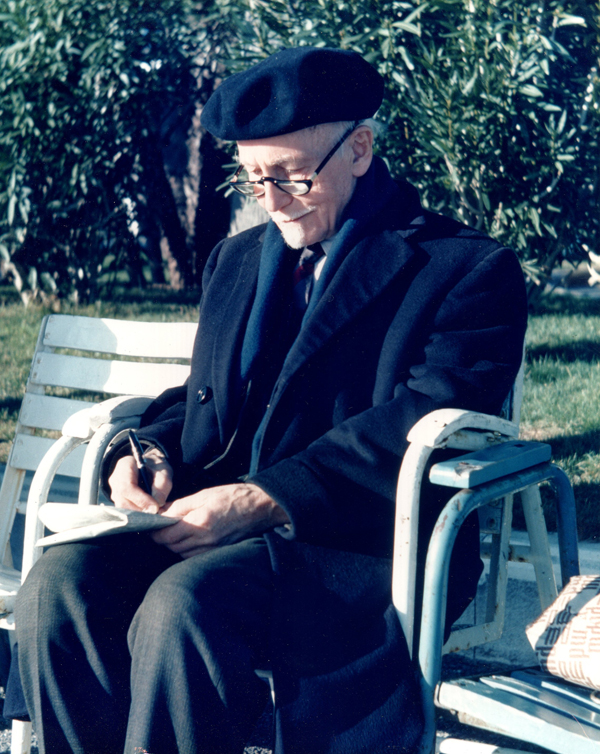
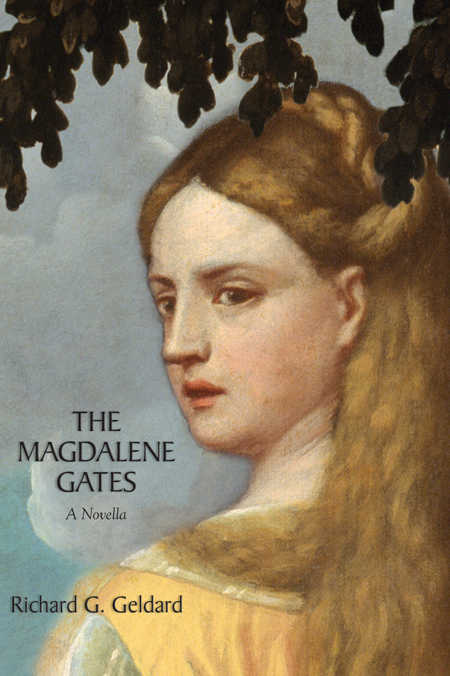
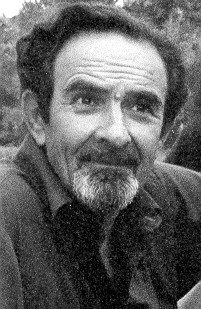

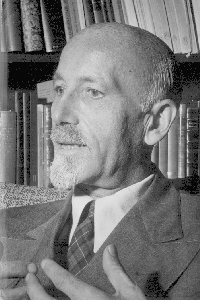
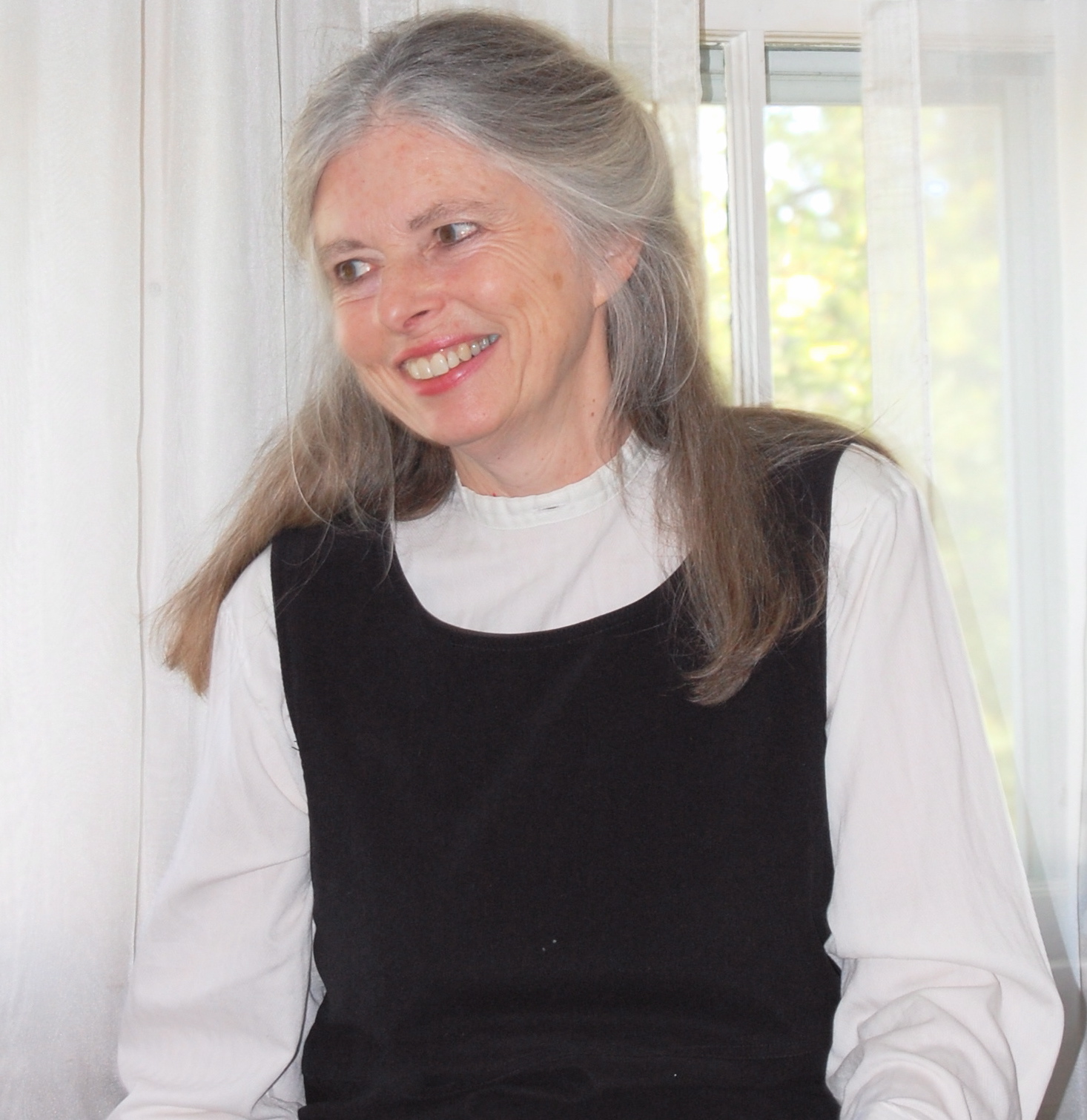
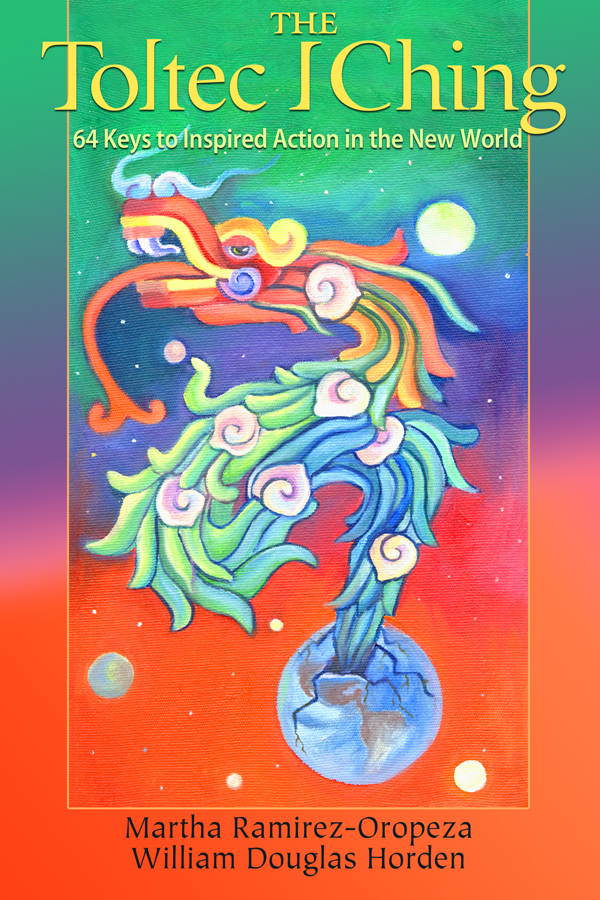
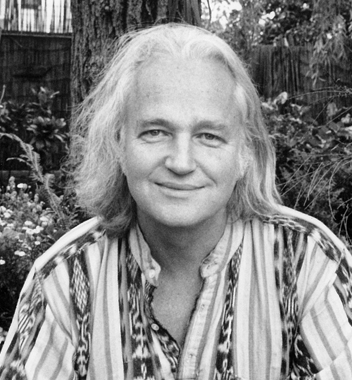
.jpg)
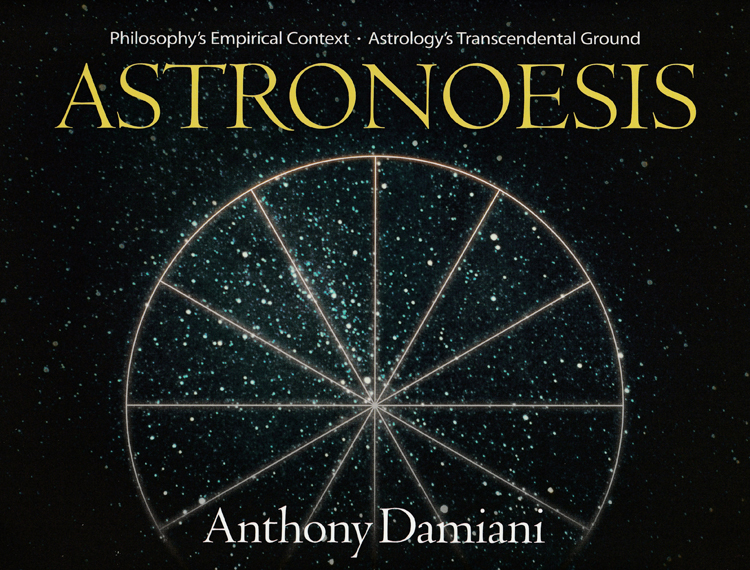
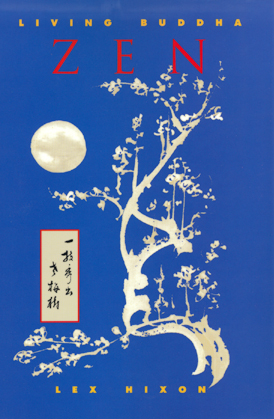
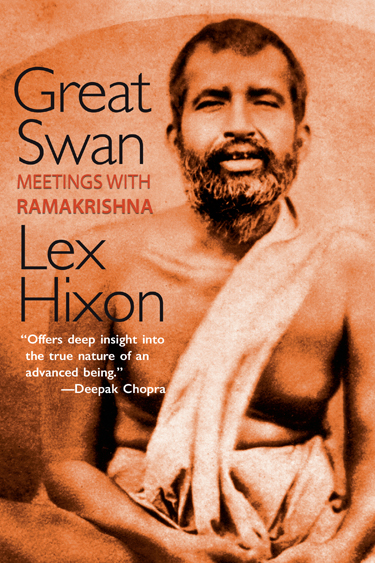
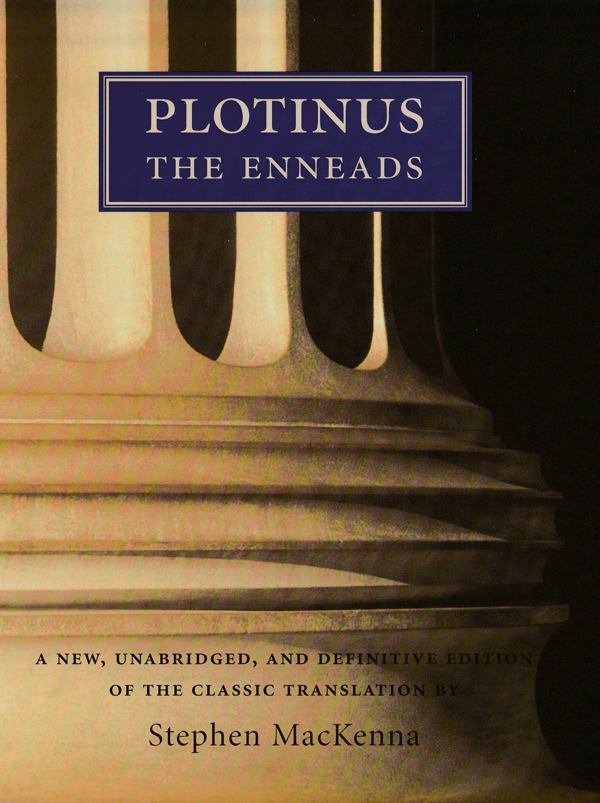
.jpg)
.jpg)
